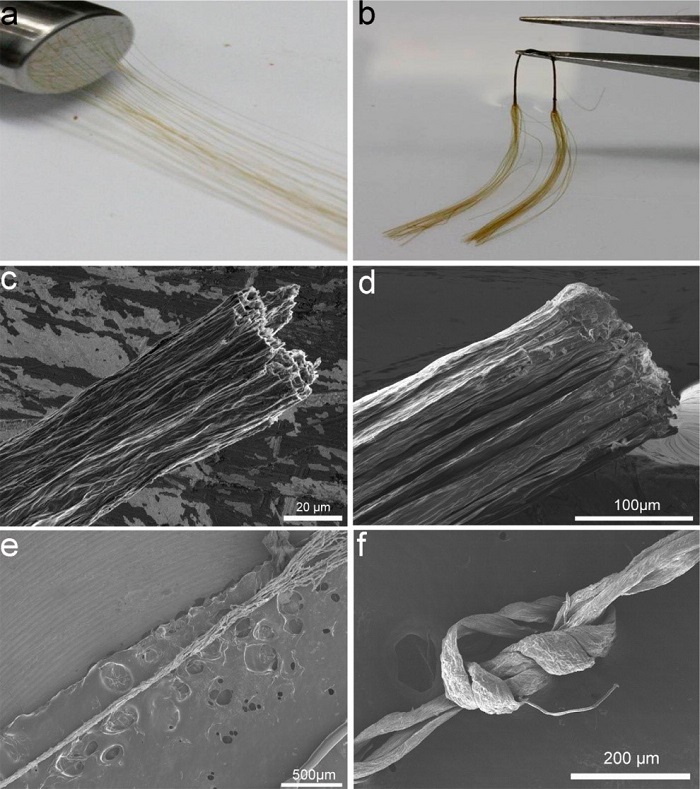Collaborators
(Internal): Saeideh Alipoori, Narges Nobakht
(Internal): Saeideh Alipoori, Narges Nobakht
Funded by
IPM, Iran Science Elites Federation (11/66332)
IPM, Iran Science Elites Federation (11/66332)
Published Papers
1- Review of PVA-based gel polymer electrolytes in solid-state supercapacitors: Opportunities and Challenges, Journal of Energy Storage, 27, 101072, 2020
2- Graphene oxide: An effective ionic conductivity promoter for phosphoric acid-doped poly (vinyl alcohol) gel electrolytes, Polymer, 184, 121908, 2019
3- Binder-free reduced graphene oxide 3D structures based on ultra large graphene oxide: High performance green micro-supercapacitor using NaCl, Journal of Energy Storage 21, 310-320 2019
4- Silicon: a ubiquitous contaminant in graphene derivatives with significant impact on device performance, Nature communications 9 (1), 5070, 2018
5- High-Performance Multifunctional Graphene-PLGA Fibers: Toward Biomimetic and Conducting 3D Scaffolds, Advanced Functional Materials, 2016, DOI: 10.1002/adfm.201505304
6- Liquid crystal mediated self-assembly of porous α-Fe2O3 nanorods on PEDOT:PSS functionalized graphene as a flexible ternary architecture for capacitive energy storage, Particle and Particle Systems Characterization, 2016. 33 (1) : p.27-37
7- Self-assembled multifunctional hybrids: Towards architecting high-performance graphene-based energy storage devices, ACS Central Science, 2015. 1(4): p.206-216
8- Multifunctional graphene yarns: Towards wearable all-carbon energy storage textiles, ACS Nano, 2014. 8(3): p.2456-2466
9- Spray Pyrolysis of liquid crystalline dispersions of graphene oxide based hybrids: a practical approach towards next generation of 3D isotropic architectures for energy storage applications, Particle and Particle Systems Characterization, 2014
10- Liquid Crystalline Graphene Oxide/PEDOT:PSS Self-Assembled 3D Architecture for Binder-Free Supercapacitor Electrodes, Front. Energy Res. 2014
11- In-situ engineering of urchin-like reduced graphene oxide-Mn2O3/Mn3O4 nanostructures for supercapacitors, RSC Advances, 2014. 4(2): p. 886-892
12- Enhanced Hydrogen Storage in Graphene Oxide‐MWCNTs Composite at Room Temperature. Advanced Energy Materials, 2012
13- Globular reduced graphene oxide-metal oxide structures for energy storage applications. Energy & Environmental Science, 2012. 5(1): p. 5236-5240
14- Comparison of GO, GO/MWCNTs composite and MWCNTs as potential electrode materials for supercapacitors. Energy & Environmental Science, 2011. 4(5): p. 1855-1865
1- Review of PVA-based gel polymer electrolytes in solid-state supercapacitors: Opportunities and Challenges, Journal of Energy Storage, 27, 101072, 2020
2- Graphene oxide: An effective ionic conductivity promoter for phosphoric acid-doped poly (vinyl alcohol) gel electrolytes, Polymer, 184, 121908, 2019
3- Binder-free reduced graphene oxide 3D structures based on ultra large graphene oxide: High performance green micro-supercapacitor using NaCl, Journal of Energy Storage 21, 310-320 2019
4- Silicon: a ubiquitous contaminant in graphene derivatives with significant impact on device performance, Nature communications 9 (1), 5070, 2018
5- High-Performance Multifunctional Graphene-PLGA Fibers: Toward Biomimetic and Conducting 3D Scaffolds, Advanced Functional Materials, 2016, DOI: 10.1002/adfm.201505304
6- Liquid crystal mediated self-assembly of porous α-Fe2O3 nanorods on PEDOT:PSS functionalized graphene as a flexible ternary architecture for capacitive energy storage, Particle and Particle Systems Characterization, 2016. 33 (1) : p.27-37
7- Self-assembled multifunctional hybrids: Towards architecting high-performance graphene-based energy storage devices, ACS Central Science, 2015. 1(4): p.206-216
8- Multifunctional graphene yarns: Towards wearable all-carbon energy storage textiles, ACS Nano, 2014. 8(3): p.2456-2466
9- Spray Pyrolysis of liquid crystalline dispersions of graphene oxide based hybrids: a practical approach towards next generation of 3D isotropic architectures for energy storage applications, Particle and Particle Systems Characterization, 2014
10- Liquid Crystalline Graphene Oxide/PEDOT:PSS Self-Assembled 3D Architecture for Binder-Free Supercapacitor Electrodes, Front. Energy Res. 2014
11- In-situ engineering of urchin-like reduced graphene oxide-Mn2O3/Mn3O4 nanostructures for supercapacitors, RSC Advances, 2014. 4(2): p. 886-892
12- Enhanced Hydrogen Storage in Graphene Oxide‐MWCNTs Composite at Room Temperature. Advanced Energy Materials, 2012
13- Globular reduced graphene oxide-metal oxide structures for energy storage applications. Energy & Environmental Science, 2012. 5(1): p. 5236-5240
14- Comparison of GO, GO/MWCNTs composite and MWCNTs as potential electrode materials for supercapacitors. Energy & Environmental Science, 2011. 4(5): p. 1855-1865
Summary in English and Photo
Flexible electronic multifunctional energy storage systems will allow the design and production of a new generation of portable electronic devices with distributed mechanical and electronic functions as well as energy storage capabilities, if realized. With many conceived novel features, such as flexibility, lightweight, and foldability, significant efforts have been devoted to fabricating these types of multifunctional devices by using carbon nanotubes or graphene as the active materials of choice for wearable electronic components. Although many promising breakthroughs have been made, as of yet, no multifunctional flexible architecture has been shown to possess all these functions simultaneously and these architectures have been proved to be very challenging to produce. Importantly, the capacitance values obtained to date still fall short of the theoretical value, with values of 409 Fg-1/electrode the best to date, reported in our paper published in ACS Nano. The purpose is then to address the above-mentioned challenge to design and fabricate self-assembled hybrids of graphene and 2D metallic transition metal dichalcogenides (TMDCs) or in general the so-called vdW heterostructures for use as flexible multifunctional architectures in energy storage device systems and thermoelectric materials.
Flexible electronic multifunctional energy storage systems will allow the design and production of a new generation of portable electronic devices with distributed mechanical and electronic functions as well as energy storage capabilities, if realized. With many conceived novel features, such as flexibility, lightweight, and foldability, significant efforts have been devoted to fabricating these types of multifunctional devices by using carbon nanotubes or graphene as the active materials of choice for wearable electronic components. Although many promising breakthroughs have been made, as of yet, no multifunctional flexible architecture has been shown to possess all these functions simultaneously and these architectures have been proved to be very challenging to produce. Importantly, the capacitance values obtained to date still fall short of the theoretical value, with values of 409 Fg-1/electrode the best to date, reported in our paper published in ACS Nano. The purpose is then to address the above-mentioned challenge to design and fabricate self-assembled hybrids of graphene and 2D metallic transition metal dichalcogenides (TMDCs) or in general the so-called vdW heterostructures for use as flexible multifunctional architectures in energy storage device systems and thermoelectric materials.
 |
 |


